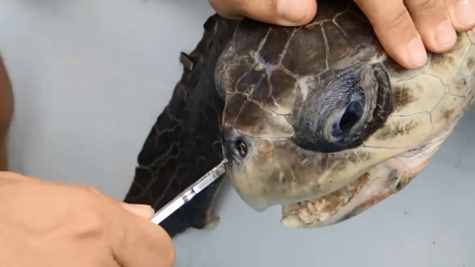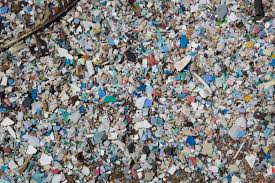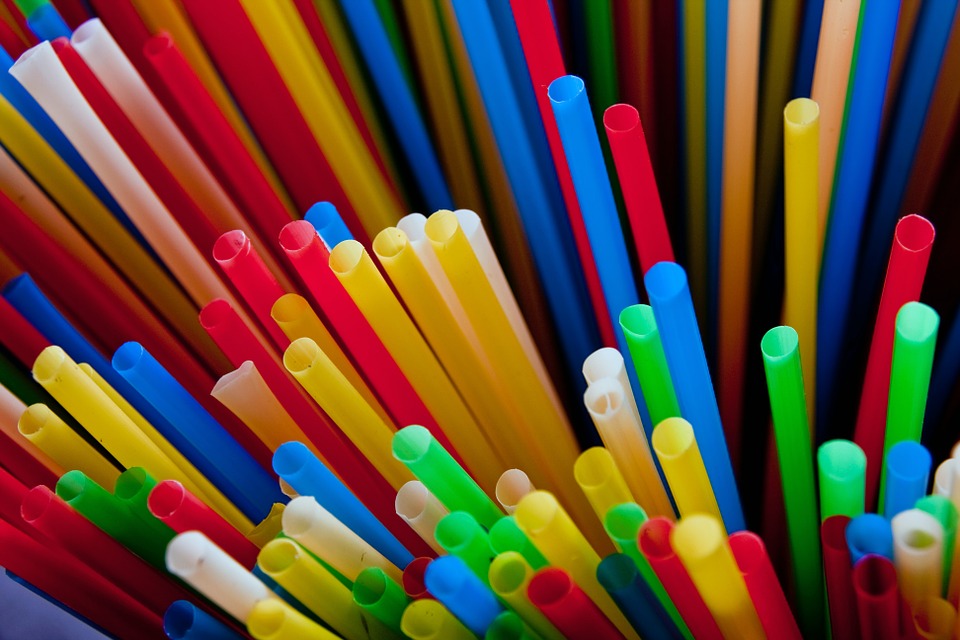Do You Really Need That Plastic Straw?
November 1, 2018
The year is 2020. Riots have begun at Starbucks; violent protestors bang on the windows and flood through unprotected doors. The display case is smashed to pieces- cake pops and muffins fly through the air. The barbarians scream at unsuspecting baristas, while desperately pleading for one thing:
A green, plastic straw.
Plastic straws, though small and seemingly insignificant, have become a prevalent issue among the environmentally cautious people of today’s society. The initiative to ban plastic straws came to light after a video depicting a sea turtle in the process of having a straw removed from its nose went viral.

According to an article published in National Geographic, 500 million plastic straws are used every day. Compounding on this shocking fact, an article published in Science Mag showed that as many as 8.3 billion plastic straws are scattered on beaches throughout the world.
As shown by the aforementioned injured sea turtle, plastic pollution shows its grim effects on marine life.
Strawless Ocean estimates that 71 percent of seabirds and 30 percent of turtles have ingested plastic- which leaves them with an unpromising mortality rate of 50 percent.
The vice president of Air Academy’s Keep Colorado Green club, sophomore Kate Nelson, had a lot to say about this matter.
“Plastic straws generate immense quantities of pollution and include harmful environmental impacts,” she said. “If more people and businesses continue to promote and use alternatives to plastic, such as biodegradable or reusable straws, we could greatly reduce our pollution on Earth.”
An obvious consensus to be found here is that plastic straws are bad and should be limited, if not eradicated altogether.
Many companies have seen the detriments caused by plastic straws and have decided to take action.
Starbucks, along with other big-name corporations such as American Airlines, SeaWorld and Hilton Hotels, are just some of the esteemed establishments pledging to eliminate their use of plastic straws in years to come.
Straw-users will often face the pressure of dirty looks and snarky glares when requesting the plastic drinking device at restaurants or cafes. Even Shuga’s, a quaint restaurant located in downtown Colorado Springs, only supplies straws upon request.
Details outlined by Global Citizen show that the initiative to exile plastic straws reaches far beyond our city, and even our country. The UK recently released a 25 year plan to reduce plastic waste, and Prime Minister Theresa May also revealed that she will be attending an upcoming consultation to ban the use of plastic straws. Similarly, Taiwan issued restrictions on plastic straws in February of this year.
Though plastic straws are an obvious issue, they are not the most important form of plastic pollution.
Plastic straws, though massively detrimental to ecosystems, make up only 0.025 percent of the eight million tons of plastic that relentlessly flood the ocean each year (National Geographic).
Environmental science and biology teacher Nathan Chisholm touched on the topic of plastic straws, expressing his belief that this issue is but a drop in the ocean.
Chisholm, who has personally been to the beaches of Costa Rica and seen piles of trash littering once beautiful beaches, referenced the fact that plastic straws may not be the most concerning form of pollution. There are other forms of plastic pollution that promise much harsher realities.
“You’ve probably heard of the Great Pacific garbage patch,” he said.
The Great Pacific garbage patch is an accumulation of trash that has conglomerated in the Pacific Ocean. It contains a whopping total of 1.8 trillion plastic pieces, which averages to 250 pieces of plastic per person. If something is not done to fix this monstrosity, the plastic will degrade into dangerous microplastics: tiny pieces of plastic that can be easily ingested by marine wildlife. They form when plastic is broken down into smaller and smaller pieces.

The Great Pacific garbage patch is just one of the things that society should be talking about more than plastic straws. Of course, any reduction in plastic use helps. However, focusing energy on only plastic straws is redundant, as they only make up a mere .025 percent of the problem.
Though somewhat trendy and popular at the moment, the plastic straw ban is just scraping the surface of the mess we need to clean up. Other single-use plastics such as plastic bags, utensils, water bottles or take out containers must go as well.
Finding more eco-friendly alternatives to plastic straws, or even phasing straws out altogether (with the exception of medical usage), is a step in the right direction. Any reduction in plastic pollution is important and relevant.
However, it is only the start.
